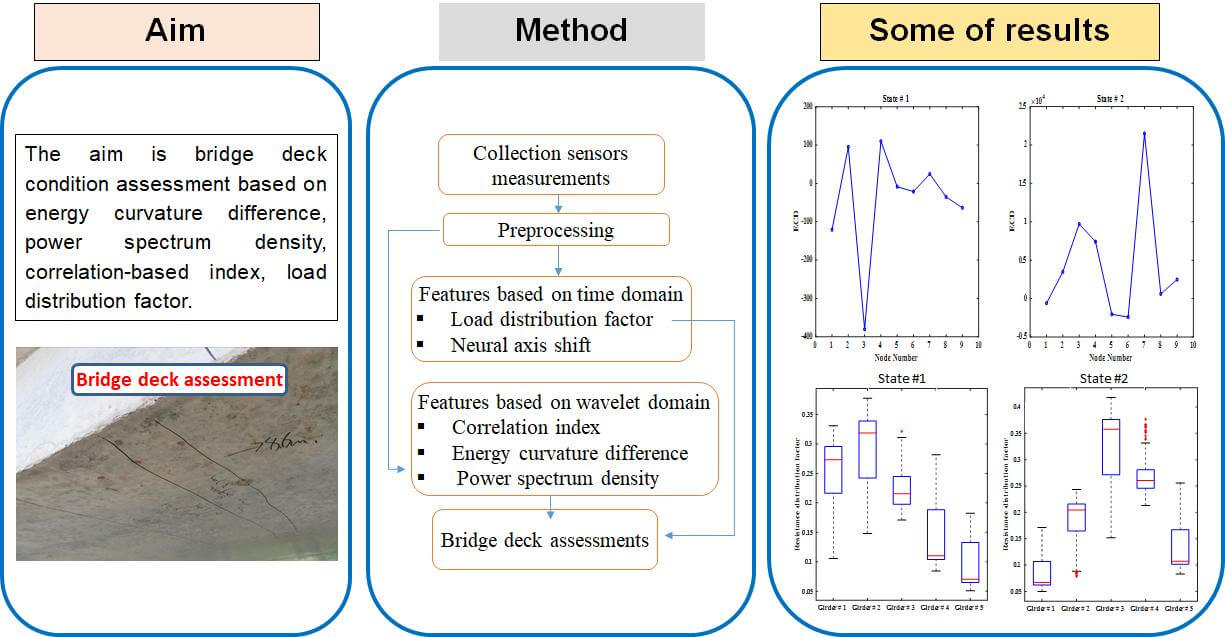 Open Access
Open Access
ARTICLE
Development of Features for Early Detection of Defects and Assessment of Bridge Decks
1 Nanjing Zhixing Information Technology Co., Ltd., Nanjing, China
2 Jiangsu Advance Transportation Institute, Nanjing, China
3 Suzhou Highway Development Center, Suzhou, China
4 Guangdong Communications Group Co., Ltd., Guangzhou, China
5 Department of Mechanical Engineering, California Polytechnic State University, San Luis Obispo, CA, 93405, USA
6 School of Civil Engineering, University of Leeds, Leeds, LS2 9JT, UK
7 Department of Civil Engineering, Faculty of Engineering Sciences, Nyala University, Nyala, 092, Sudan
8 Department of Mechanical Engineering, Faculty of Engineering, Alexandria University, Alexandria, 21544, Egypt
* Corresponding Authors: Mohammad Noori. Email: ; Wael A. Altabey. Email:
Structural Durability & Health Monitoring 2023, 17(4), 257-281. https://doi.org/10.32604/sdhm.2023.023617
Received 05 May 2022; Accepted 06 January 2023; Issue published 02 August 2023
Abstract
Damage detection is an important area with growing interest in mechanical and structural engineering. One of the critical issues in damage detection is how to determine indices sensitive to the structural damage and insensitive to the surrounding environmental variations. Current damage identification indices commonly focus on structural dynamic characteristics such as natural frequencies, mode shapes, and frequency responses. This study aimed at developing a technique based on energy Curvature Difference, power spectrum density, correlation-based index, load distribution factor, and neutral axis shift to assess the bridge deck condition. In addition to tracking energy and frequency over time using wavelet packet transform, in order to further demonstrate the feasibility and validity of the proposed technique for bridge condition assessment, experimental strain data measured from two stages of a bridge in the different intervals were used. The comparative analysis results of the bridge in first and second stage show changes in the proposed feature values. It is concluded, these changes in the values of the proposed features can be used to assess the bridge deck performance.Graphic Abstract

Keywords
Cite This Article
 Copyright © 2023 The Author(s). Published by Tech Science Press.
Copyright © 2023 The Author(s). Published by Tech Science Press.This work is licensed under a Creative Commons Attribution 4.0 International License , which permits unrestricted use, distribution, and reproduction in any medium, provided the original work is properly cited.


 Submit a Paper
Submit a Paper Propose a Special lssue
Propose a Special lssue View Full Text
View Full Text Download PDF
Download PDF Downloads
Downloads
 Citation Tools
Citation Tools
